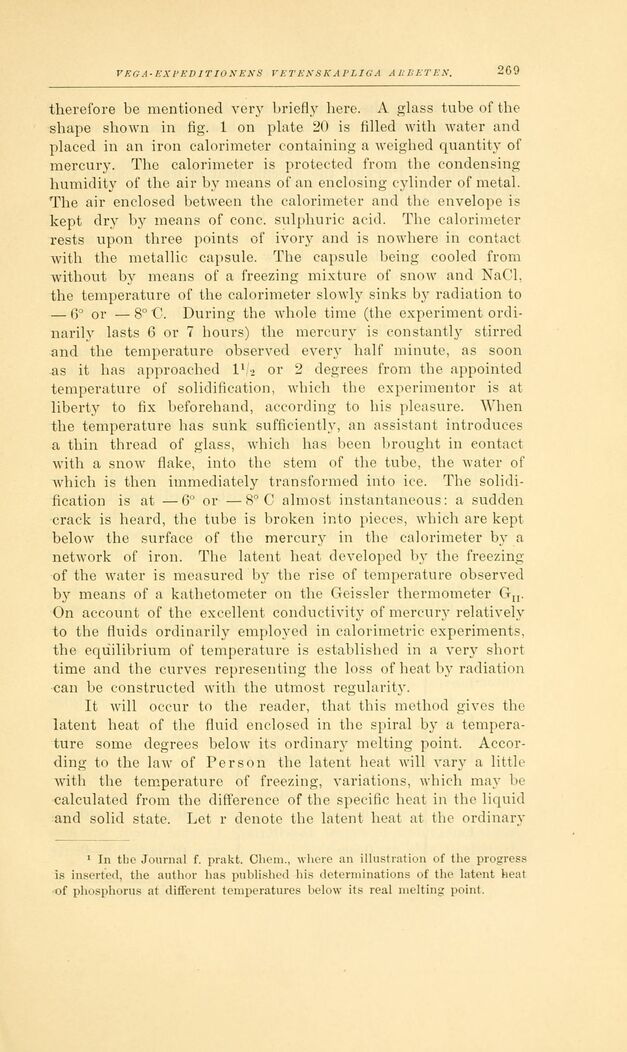
Full resolution (JPEG) - On this page / på denna sida - Sidor ...

<< prev. page << föreg. sida << >> nästa sida >> next page >>
Below is the raw OCR text
from the above scanned image.
Do you see an error? Proofread the page now!
Här nedan syns maskintolkade texten från faksimilbilden ovan.
Ser du något fel? Korrekturläs sidan nu!
This page has never been proofread. / Denna sida har aldrig korrekturlästs.
therefore be mentioned very briefly here. A glass tube of the
shape shown in fig. 1 on plate 20 is filled with water and
placed in an iron calorimeter containing a weighed quantity of
mercury. The calorimeter is protected from the condensing
humidity of the air by means of an enclosing cylinder of metal.
The air enclosed between the calorimeter and the envelope is
kept dry by means of conc. sulphuric acid. The calorimeter
rests upon three points of ivory and is nowhere in contact
with the metallic capsule. The capsule being cooled from
without by means of a freezing mixture of snow and NaCl,
the temperature of the calorimeter slowly sinks by radiation to
— 6° or — 8° ’C. During the whole time (the experiment
ordinarily lasts 6 or 7 hours) the mercury is constantly stirred
and the temperature observed every half minute, as soon
as it has approached D/2 or 2 degrees from the appointed
temperature of solidification, which the experimentor is at
liberty to fix beforehand, according to his pleasure. When
the temperature has sunk sufficiently, an assistant introduces
a thin thread of glass, which has been brought in contact
with a snow flake, into the stem of the tube, the water of
which is then immediately transformed into ice. The
solidification is at —6° or —8° C almost instantaneous: a sudden
crack is heard, the tube is broken into pieces, which are kept
below the surface of the mercury in the calorimeter by a
netw’ork of iron. The latent heat developed by the freezing
of the water is measured by the rise of temperature observed
by means of a katlietometer on the Geissler thermometer Gn.
On account of the excellent conductivity of mercury relatively
to the fluids ordinarily employed in calorimetric experiments,
the equilibrium of temperature is established in a very short
time and the curves representing the loss of heat by radiation
can be constructed with the utmost regularity.
It will occur to the reader, that this method gives the
latent heat of the fluid enclosed in the spiral by a
temperature some degrees below its ordinary melting point.
According to the law7 of Person the latent heat will vary a little
with the temperature of freezing, variations, which may be
calculated from the difference of the specific heat in the liquid
and solid state. Let r denote the latent heat at the ordinary
1 In the Journal f. prakt. Cliem., where an illustration of the progress
is inserted, the author has published his determinations of the latent heat
■of phosphorus at different temperatures below its real melting point.
<< prev. page << föreg. sida << >> nästa sida >> next page >>